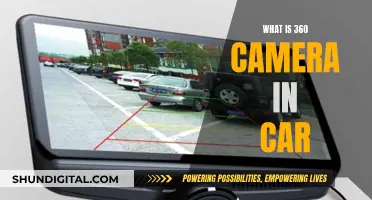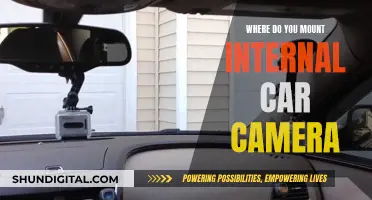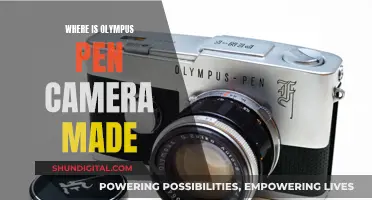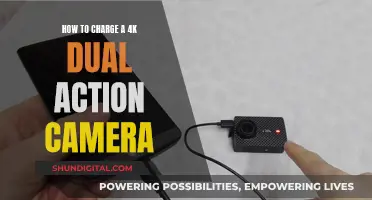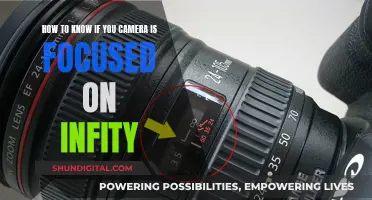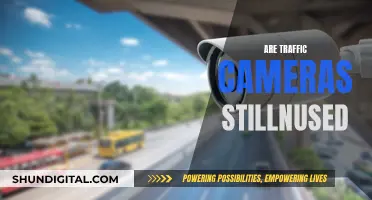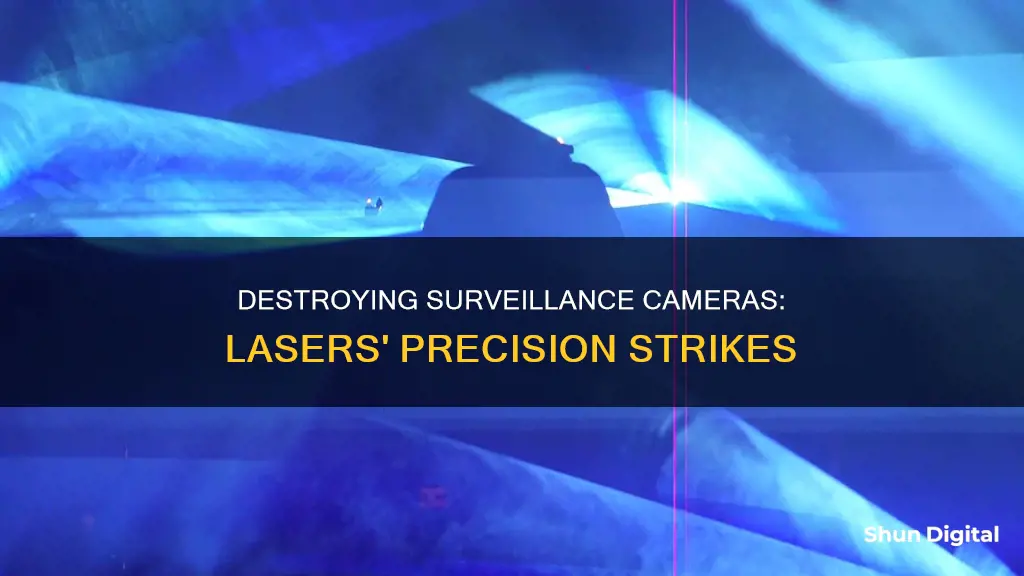
Surveillance cameras are susceptible to laser attacks, and it is possible to damage them using laser pointers. The success of this method depends on the wattage of the laser and the quality of the camera. Lasers with a power output of over 100 mW can damage cameras, with those over 200 mW capable of burning out pixels and causing physical damage to the camera sensor. Higher-powered lasers can blind or even destroy a camera, but they are expensive, difficult to aim, and require a sophisticated setup. Lower-powered laser pointers can also be used to temporarily blind cameras, although this effect is usually short-lived. To protect cameras from laser attacks, measures such as installing laser detection devices, using mirrors or lens covers, and implementing infrared filters can be taken.
| Characteristics | Values |
|---|---|
| Laser colour | Green lasers are more visible than other colours |
| Laser power | 50mW can flashblind a camera; over 100mW can damage a camera; over 200mW will blow out pixels; over 400mW will blow a big black hole in the CCD/CMOS |
| Laser type | High-powered laser pointers can disable a security camera; average laser pointers lack the ability to disable a camera sensor |
| Camera type | All visible light imaging technologies are vulnerable, including film cameras, CCD, and CMOS sensors |
| Camera location | Outdoor security cameras are less susceptible to laser attacks than indoor ones |
| Camera protection | Laser detection devices, mirrors or camera lens covers, IR filters, IR illuminators, physical barriers, and outdoor installation can protect cameras from laser damage |
What You'll Learn

A 500mW laser can destroy a camera
To destroy a camera, the laser would need to be directed at the lens or the sensor. The lens is the glass-covered area at the front of the camera, and the sensor is the light-sensing component at the back. A 500mW laser would be powerful enough to physically damage the camera's sensor, melting or overloading the circuitry.
The effectiveness of the laser will depend on the quality of the camera and the distance from the target. The further the laser is from the camera, the more the beam will diverge, reducing its intensity. Additionally, the laser would need to be aimed very steadily at the camera to be effective, and the user would need to account for any movement or vibration that might cause the laser to move off-target.
In the United States, a permit is generally required to use a laser over 500mW. Lasers of this wattage are not common, and they can be expensive. However, they are available for purchase online.
It is important to note that using a laser in this way could be considered vandalism or a dangerous activity, and local laws and regulations should be considered before attempting to destroy a camera in this manner.
Traffic Cameras: How Often Do They Issue Tickets?
You may want to see also

A 5mW laser can blind but not damage a camera
A 5mW laser is not strong enough to damage a camera. However, it can temporarily blind a camera by creating a super bright spot on the camera sensor. This bright spot is too intense for the camera to compensate for, and it will result in a blinding effect. The laser needs to be directed for a few seconds directly into the camera's sensor to achieve this blinding effect.
It is important to note that the effectiveness of this method depends on the quality of the camera and how steady the laser is held. The laser needs to be pointed directly into the camera's sensor, and any movement of the laser will amplify the further it is from the camera. Additionally, the laser does not need to shine directly down the centre axis of the camera to blind it. Shining the beam onto the front element of the lens from a slight angle can increase the flare and achieve the same blinding effect.
While a 5mW laser may not cause permanent damage, it is still important to use it responsibly and avoid pointing it at people or aircraft. Higher-powered lasers, such as those over 500 mW, can cause more severe damage and may require a permit to operate in some jurisdictions.
To protect against this type of attack, it is recommended to have multiple cameras covering the same area or install hidden cameras so that if one is disabled, there are others that can still capture the necessary footage.
Mirrorless Cameras: Focusing Secrets Unveiled
You may want to see also

A 50mW laser can flashblind a camera
The vulnerability of cameras to lasers is due to the way they are designed to sense light. Cameras have very sensitive sensors that transform incoming photons into electronic impulses. Laser beams have a high energy density at the point where they hit the camera sensor, and this density increases when the camera uses optical zoom or other lenses, as they focus the beams even more intensely onto the sensor.
The distance from the laser is also a crucial factor in the damage it can cause. The closer the laser is to the camera, the more dangerous it is. In professional laser shows, operators specify safety zones in the software to blank off the laser at camera positions.
It is worth noting that the colour of the laser also makes a difference. Green lasers are more powerful than red lasers, which carry less energy and are less likely to damage a camera without prolonged exposure. Blue lasers are even more damaging than green lasers, as just looking at the impact point can hurt your eyes.
In addition, cheaper lasers may not filter out all light as they should, allowing UV light to pass through and cause damage to camera sensors.
Is Your Fujifilm Camera Charging? Here's How to Know
You may want to see also

A 100mW laser can damage a camera
Using an optical zoom or other lenses increases the danger of damaging the camera sensor as it focuses the beams onto the sensor. A 100mW laser can start to damage a camera, with the ability to poke holes and blow out pixels. A 50mW laser can flashblind a CCD camera but won't damage it. Over 200mW will cause more significant damage, and a laser of over 400mW will blow a big black hole wherever the laser touches the CCD/CMOS.
A laser of around 100mW can also blind a camera temporarily, without causing permanent damage. This can be done with a green laser of 532nm directed for a few seconds directly into the camera's sensor.
History of the Woca 120 GF Camera: When Was It Made?
You may want to see also

A 200mW laser can burn out a camera
To destroy a camera with a laser, the laser must be aimed directly into the camera's lens. The laser needs to be held very steadily, and the further the laser is from the camera, the more the movement is amplified. The laser does not need to be aimed directly down the centre axis of the camera to blind it; shining the beam onto the front element of the lens from a slight angle can increase the flare and blind the camera.
The type of camera does not matter; a 200mW laser will work on all visible light imaging technologies, including film cameras, CCD, and CMOS sensors. However, a laser with a higher power output may be required to destroy more advanced cameras with metal shutters, such as traffic cameras.
It is important to note that lasers can be dangerous and should be used with caution. Lasers over 500mW can blind or burn human skin, and in the US, a permit is generally required to use a laser over this power output.
How Camera Tickets Affect Your Credit Score
You may want to see also
Frequently asked questions
A high-powered laser pointer can destroy a surveillance camera. A 500mW laser can destroy a camera, and a 2W laser will likely be able to.
A laser can blind or burn out a camera's sensor, or break the lens. A strong enough laser can physically damage the camera's circuitry.
Install laser detection devices, use mirrors or camera lens covers, install infrared filters, or use outdoor cameras.
Someone may want to prevent the camera from capturing evidence of a crime, or because they do not want to be recorded.


